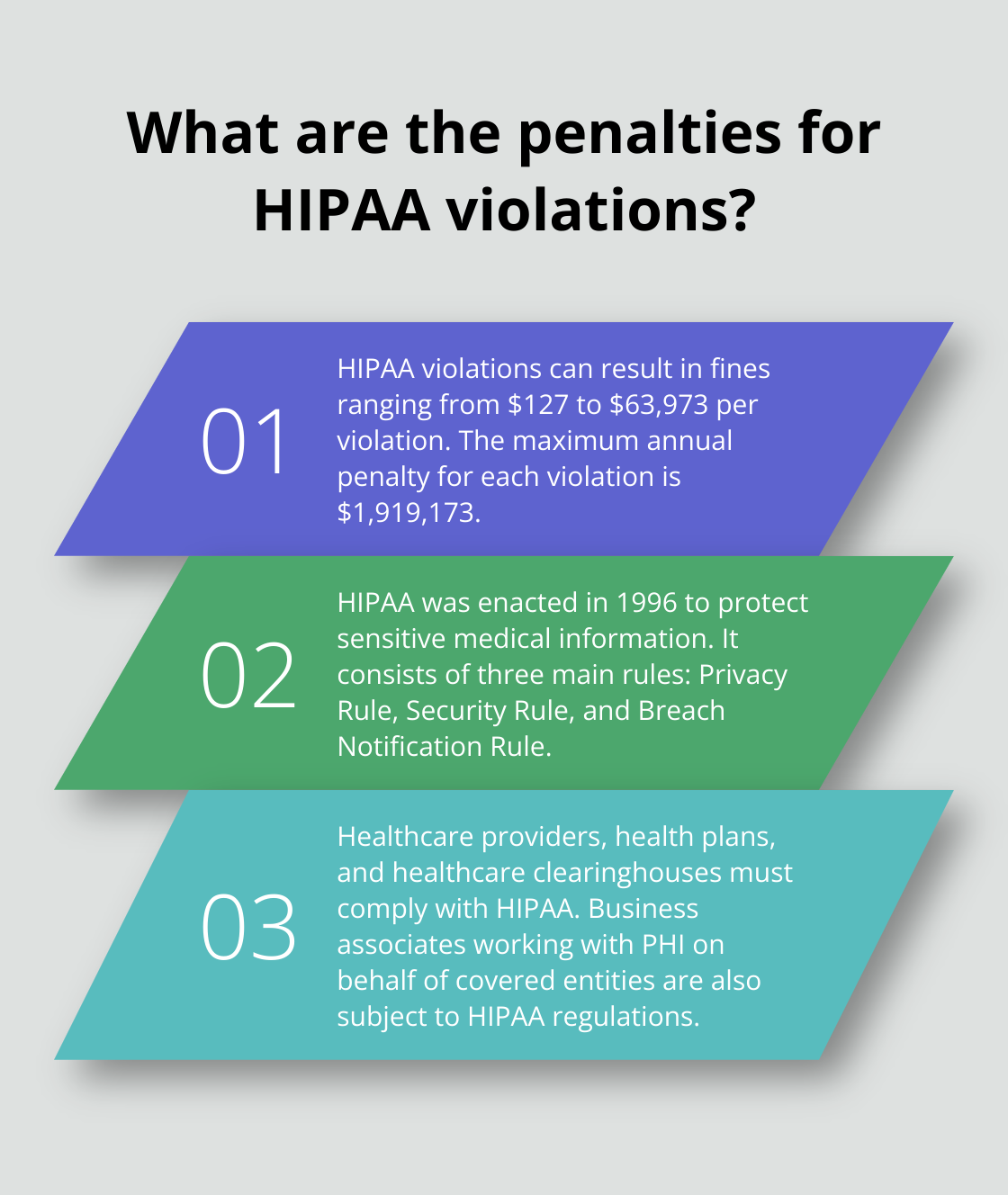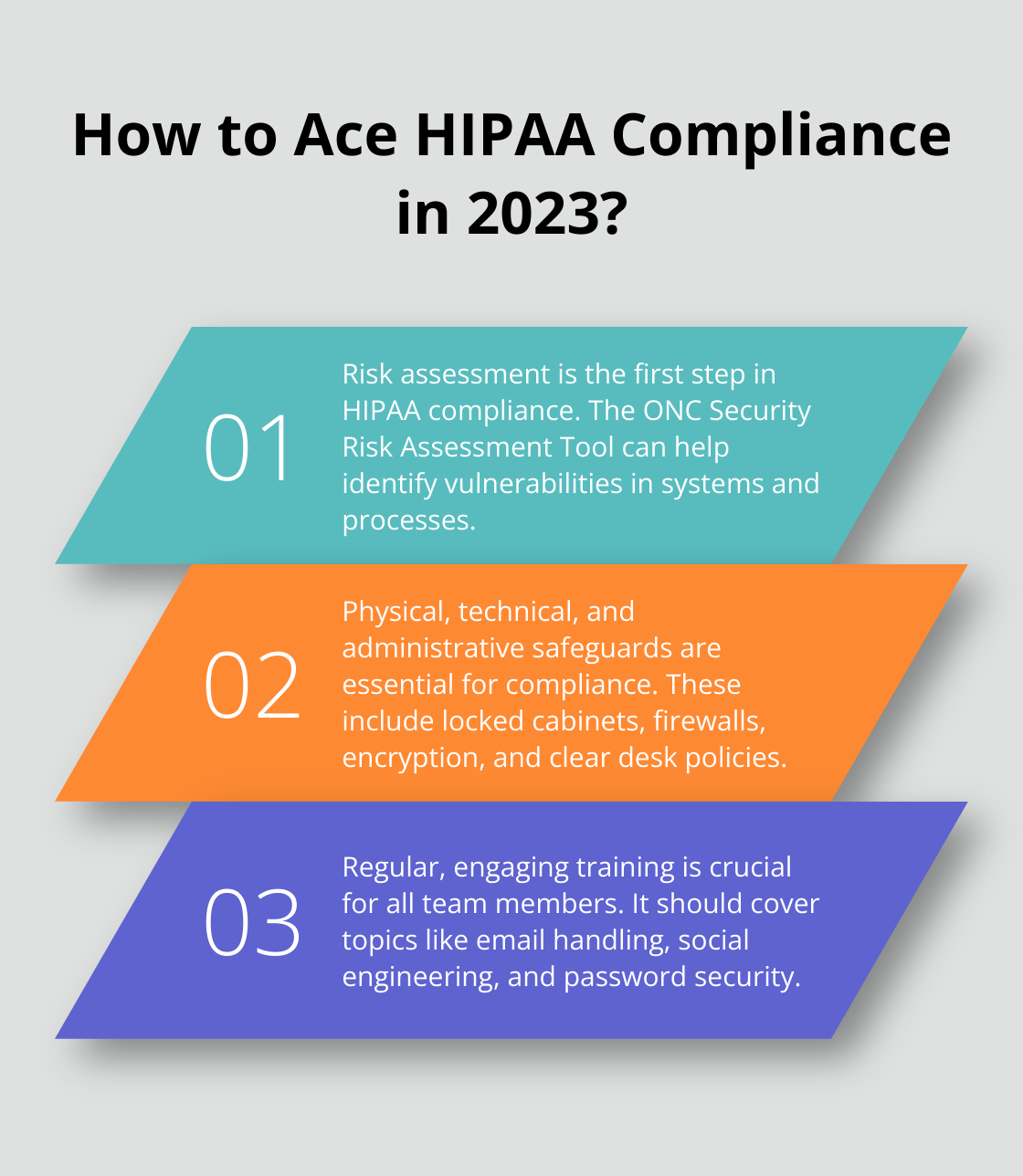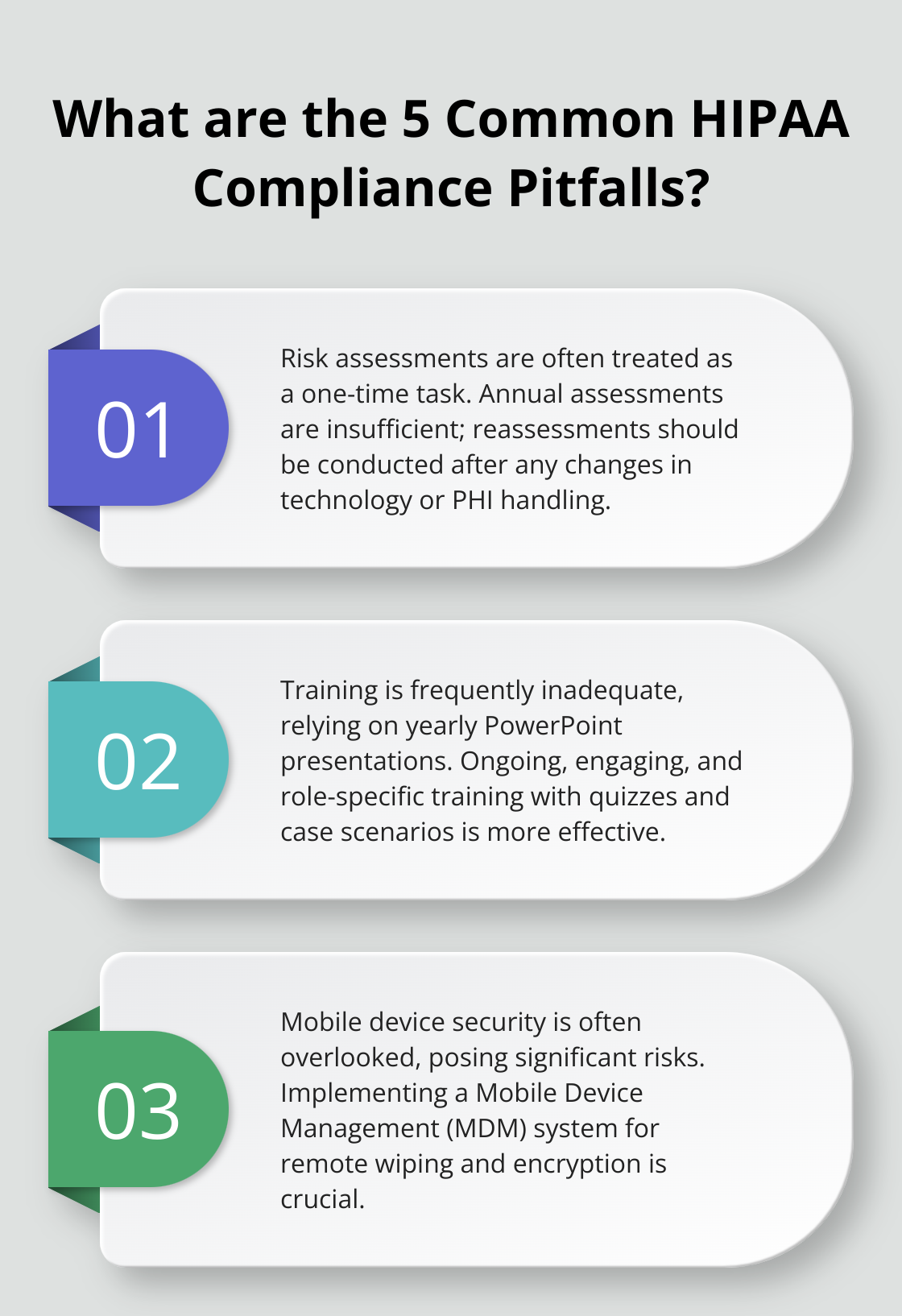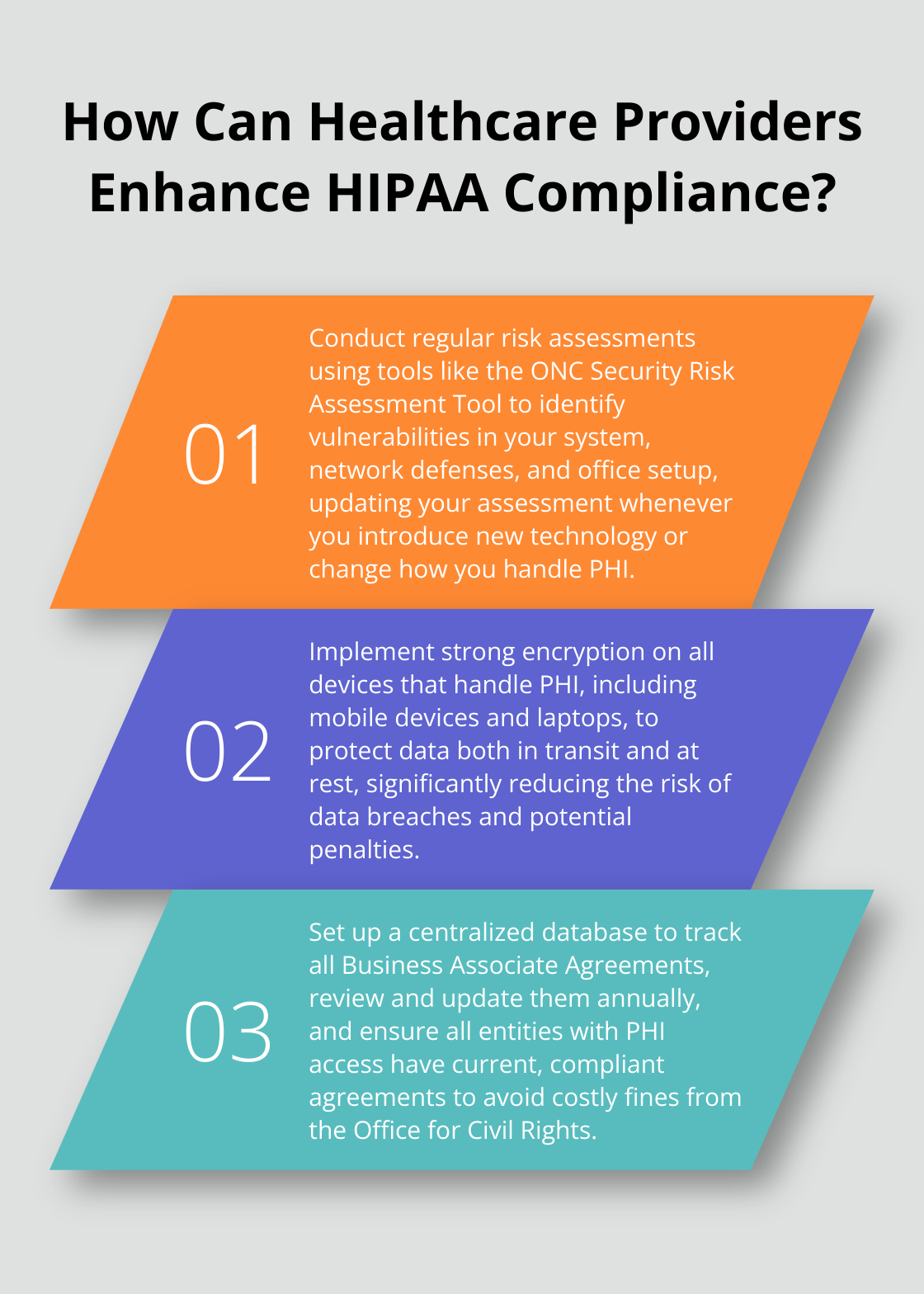HIPAA compliance — yeah, it’s a big deal in the healthcare world. It’s all about keeping patient data on lock. And, let’s face it, nobody wants the government knocking on their door with a penalty slip. At ScriberJoy, we’re all over this like a rash (not the medical kind). We get it — it’s crucial to be in the loop with all those ever-changing regs.
So, we’ve gone ahead and whipped up our HIPAA compliance checklist for 2023. Think of it as your trusty roadmap through the regulatory jungle, helping you dodge those nasty fines. This guide? Oh, it’s all about helping healthcare folks cut through the red tape and beef up their data security game.
What is HIPAA and Who Must Comply?
The Three Pillars of HIPAA
HIPAA-think of it as the health data bouncer-swooped in back in 1996 to put some much-needed guardrails on your sensitive medical info. It’s the law that lets you, yes you, control your health data and tells Big Pharma and medical folks how to act. So, what’s in the HIPAA toolbox? Three main tools:
- The Privacy Rule: This is the gatekeeper for your Protected Health Information (PHI). It’s all about delineating who gets to see your health data, and-wait for it-gives you some nifty rights to check and tweak your own health records. More power to the peeps.
- The Security Rule: Next up, we’ve got the bouncer for electronic PHI (ePHI). It’s the one saying, “Hey, set up some tough-as-nails safeguards-admin, physical, technical-you name it. Keep the ePHI fortress secure.”
- The Breach Notification Rule: And, oh boy, if someone messes up and lets your PHI slip out unsecured? The word’s going out to you, Uncle Sam (the Department of Health and Human Services), and maybe even the newspapers. Transparency meets accountability.
Entities Required to Comply with HIPAA
Who’s got to toe the HIPAA line? If you’re a covered entity or a business associate, you’re in the hot seat. Here’s the scorecard:
- Healthcare providers: Doctors, clinics, psychologists, dentists-you catch my drift-are all members of the HIPAA club.
- Health plans: Think health insurance, HMOs, company health plans, and yes, our old pals, Medicare and Medicaid.
- Healthcare clearinghouses: These folks turn health info into a standardized set. Standardization? It’s hip.

Business associates-those rangy sorts working with PHI on behalf of covered entities-also make the list. Picture it:
- Third-party admins helping health plans with claims
- CPAs diving into accounting with PHI access
- Attorneys dishing out legal advice to health plans (PHI in tow)
- Lone ranger medial transcriptionists
Consequences of Non-Compliance
Try skipping out on HIPAA rules-spoiler alert-it’s gonna sting. The Office for Civil Rights at HHS cracks the whip. Flout the rules, and watch your wallet:
- Fines from $127 up to $63,973 per violation (yeah, 2023 rates)
- Top out at $1,919,173 per year for each violation (mind those commas)
- And, if you’re really asking for it-criminal charges. Boom.
The Importance of Ongoing Compliance
Here’s the kicker-HIPAA compliance isn’t a one-and-done gig. It’s the never-ending story. So, what should healthcare outfits do?
- Keep risk assessments rolling on the regular
- Buff up policies and procedures like they’re a classic car
- Drill HIPAA rules into staff like it’s going outta style
- Keep an eagle eye on PHI access
- Bolster security defenses like you’re in some high-level espionage thriller
As the healthcare world morphs, so does the data protection game. Coming up, we’re diving into key steps to keep HIPAA compliance in lockstep with the times in 2023-because staying ahead of data breaches is the new black.
How to Ace HIPAA Compliance in 2023
Risk Assessment: Your First Line of Defense
Jumpstart with an in-depth risk assessment. Think of it not as just ticking boxes-but as the compass guiding you to compliance. A HIPAA risk assessment digs into threats around PHI privacy and security, the odds of those threats showing up, and what could go wrong if they do.

Leverage tools like the ONC Security Risk Assessment Tool to spotlight system vulnerabilities. Peek into everything-from your network defenses to how your office is set up. Ponder these: Are patient files lounging unsupervised? Is your Wi-Fi network guard up? You need answers to these questions.
Safeguards: Building Your Compliance Fortress
Once risks are out in the open, shore up with safeguards. Erect those physical barriers-like locked file cabinets and secured rooms. And weave in technical defenses-firewalls, antivirus shields, encryption magic.
Don’t turn a blind eye to administrative safeguards. These are the rules and routines that decide how your crew handles PHI. Example? A clear desk policy… ensuring no sensitive info is basking in plain sight.
Training: Your Secret Weapon
Your team? The frontline warriors against HIPAA slip-ups. Regular, pull-you-in training is crucial.
Craft engaging, real-world training. Serve up scenarios and interactive sessions. Tackle the art of email handling, the sneaky world of social engineering, and the gospel of robust passwords. Training should morph into an ongoing saga-not a one-off affair.
HIPAA compliance? It’s the ultimate team sport. Everyone-from receptionist to CEO-has a role to play. With solid training, you can morph your organization’s approach to data security.
Business Associate Agreements: Securing Your Partnerships
Keep your business associates in the loop. These are the entities doing tasks or functions on your behalf, involving PHI touchpoints. You absolutely need those written contracts (Business Associate Agreements) ensuring they’re on the ball safeguarding PHI.
Review and tweak these agreements on the regular. The Office for Civil Rights? They’ve logged plenty of HIPAA slip-ups due to outdated or missing Business Associate Agreements.
Encryption: Protecting Data in Transit and at Rest
Encryption-your data guardian angel in the HIPAA toolkit. It shields PHI when it’s traveling (in transit) and when it’s kicking back (at rest). Sure, HIPAA doesn’t command encryption, but…it’s a suggestion worth listening to.
Deploy strong encryption on all devices working with PHI (think mobile gadgets and laptops). This move likely shrinks data breach risks and those nasty penalties.
HIPAA compliance might feel like a mountain, but these moves are your climbing gear. Secure your patients’ data and keep your organization’s good name intact. Coming up-we’ll dive into familiar HIPAA traps and unveil strategies to dodge them like a pro seasoned in the art of avoidance.
Where Do HIPAA Compliance Efforts Often Fall Short?
HIPAA compliance presents challenges for healthcare organizations. Even with good intentions, mistakes happen. So… Where are they tripping up and how can they, you know, not trip up?
The Risk Assessment Trap
Here’s the deal-treating risk assessments like a “check it off the list” kind of thing? Not gonna cut it. The healthcare landscape changes faster than a tech startup’s business model (seriously). Annual risk assessments? That’s just the ticket in. Get proactive-new tech or any tweak to PHI handling means it’s reassessment time.

Oh, and the Office for Civil Rights? They’ve got this nifty Security Risk Assessment Tool. Use it. It’s perfect for keeping the process frequent and, yes, less of a resource hog.
The Training Tightrope
Training? Well, a yearly PowerPoint snooze-fest isn’t going to do it (sorry, not sorry). What’s needed is training that doesn’t just talk the talk but walks the walk. Ongoing, engaging, role-specific lessons-that’s the magic formula.
Think quizzes, case scenarios, and some real-world stories. Keep it lively, and you’ll see those HIPAA violations take a nosedive… ’cause human error needs to get benched.
Mobile Device Mayhem
Then there’s our little “mobile life” revolution. Ignoring device security? It’s like leaving your front door open in a crime thriller.
Get a solid Mobile Device Management (MDM) system-one that lets you remotely wipe lost gear, enforces encryption like a digital guardian, and decides which apps play nice with PHI. Personal devices working overtime? They need to get with the program too.
Outdated Business Associate Agreements
And those Business Associate Agreements (BAAs)? Can’t just let them gather dust. It’s like setting money on fire-The OCR doesn’t mess around, throwing million-dollar fines like confetti for that kind of oversight.
Set an annual reminder, review, update. Keep a central database-it’s your yearbook of business associates, complete with the last agreement signed. Avoid turning mistakes into expensive anniversaries.
The PHI Disposal Dilemma
Improper PHI disposal-it’s that easy-to-fix goof-up. But hey, not everyone catches it.
Invest in a great cross-cut shredder for paper. Go Department of Defense-grade on software for nuking electronic data. Hardware-those old computers and smartphones? They deserve your undivided attention before hitting the recycling stack.
And just like that, you’re playing dodgeball with the big boys, avoiding pitfalls as easily as pie.
Final Thoughts
HIPAA compliance-it’s not just a box to tick. It’s a marathon of protecting delicate patient data. Healthcare outfits gotta roll up those sleeves and grind through regular risk assessments, slap up some rock-solid safeguards, and dish out robust training. Plus, they need an eagle eye on business associates and a knack for keeping pace with tech and threats that are always evolving. Sure, dodge those penalties… but it’s also about trust. Trust with patients and partners.

Beyond just dodging the bullet of fines, sticking to HIPAA brings a windfall. Reputation gleams, operations run like a well-oiled machine, and confidentiality? Iron-clad. This laser focus on privacy isn’t just a good look-it’s a differentiator in a crowded, dog-eat-dog market. Don’t wander around lost-our HIPAA compliance checklist for 2023 is your trusty roadmap through this maze.
At ScriberJoy, we get it-HIPAA compliance in medical documentation, it’s no walk in the park. Our snazzy AI-powered transcription software is the sidekick healthcare providers need, making sure records are spot-on and compliant. We’ve got customizable templates and human verification to reinforce accuracy (over 99%) in medical transcriptions, all while keeping HIPAA standards at the forefront.

Leave a Reply
You must be logged in to post a comment.